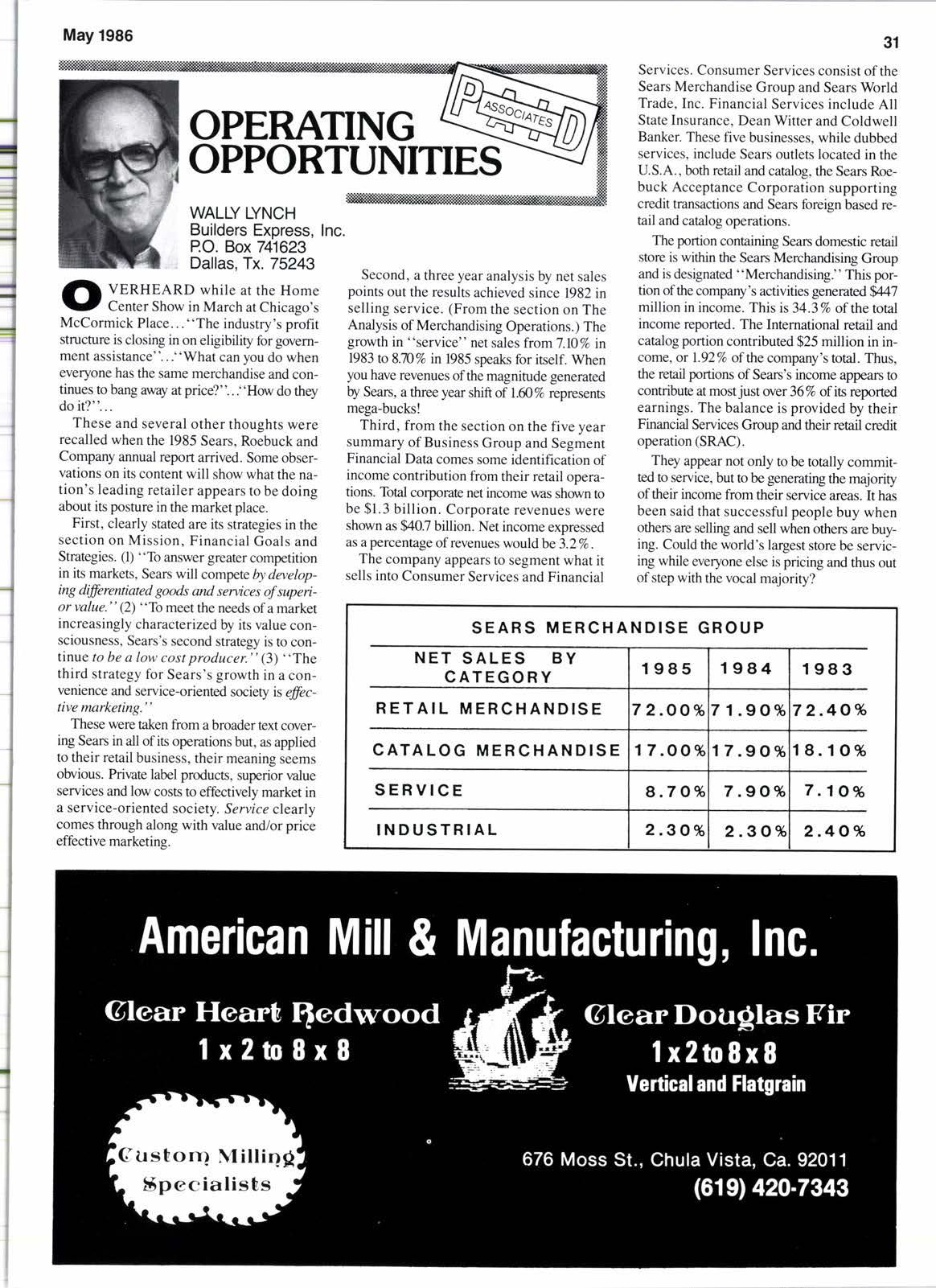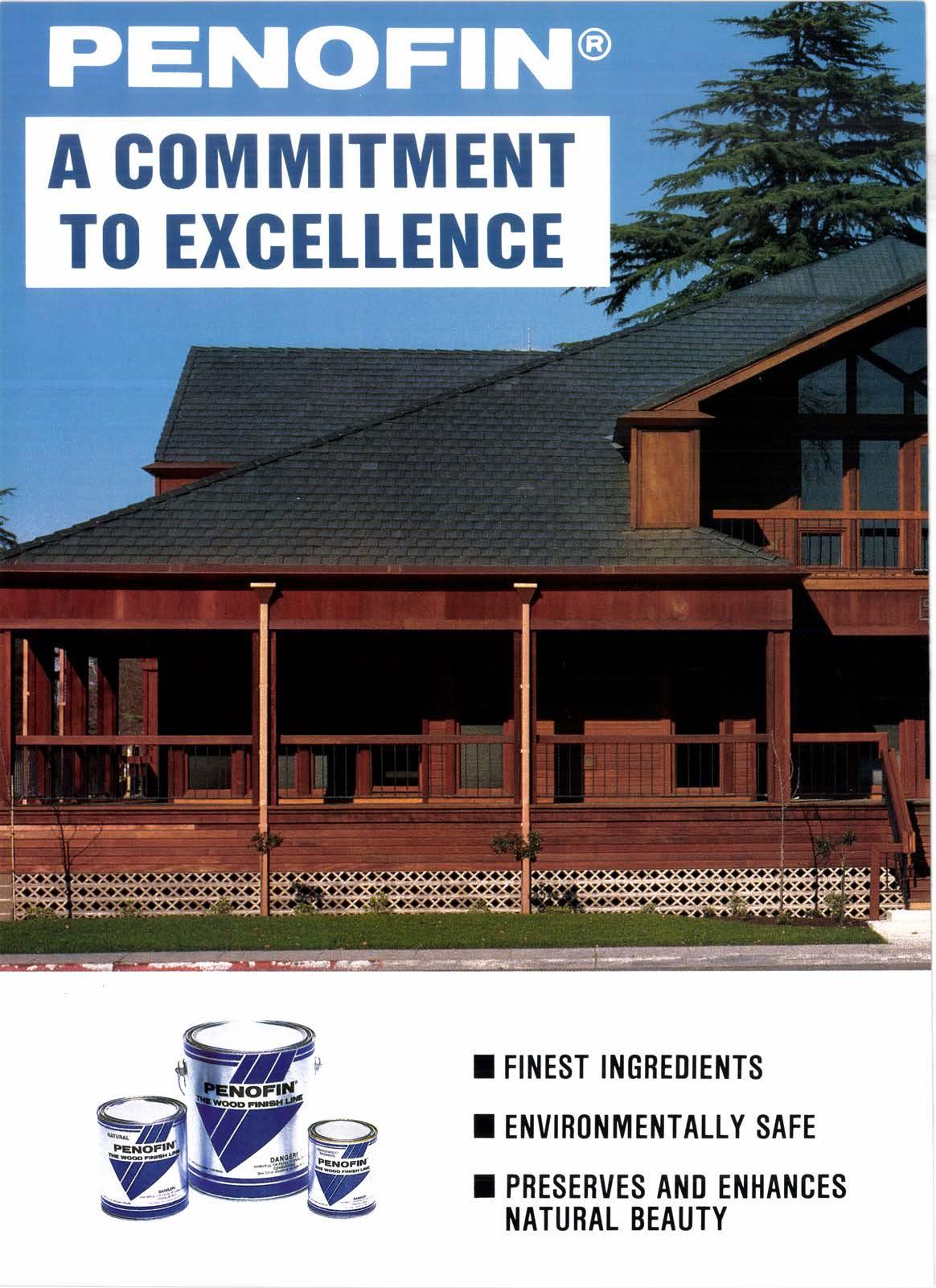
2 minute read
OPERANNG OPPORTUNITIES
VERHEARD while at the Home Center Show in March at Chicaeo's McCormick Place... "The industry's profit structure is closing in on eligibility for government assistance"..."what can you do when everyone has the same merchandise and continues to bang away at price?"..."How do they do it?"...
These and several other thoughts were recalled when the 1985 Sears, Roebuck and Company annual report arrived. Some observations on its content will show what the nation's leading retailer appears to be doing about its posture in the market place.
First, clearly stated are is strategies in the section on Mission, Financial Goals and Strategies. (1) "To answer greater competition in its markets, Sears will compte by developing differentiated goods and services ofsupeior value.' ' (2) ' 'To meet the needs of a market increasingly characterized by its value consciousness, Sears's second strategy is to continue to be a low cost producer.'' (3)''The third strategy for Sears's growth in a convenience and service-oriented society is effective marketing."
These were taken from a broader text covering Sears in all ofits operations but, as applied to their retail business, their meaning seems obvious. Private label producs, superior value services and low costs to effectively market in a service-oriented society. Service clearly comes through along with value and/or price effective marketins.
Second, a three year analysis by net sales points out the results achieved since 1982 in selling service. (From the section on The Analysis of Merchandising Operations.) The growth in "service" net sales from7.lo% in 1983 to8.T% in 1985 speaks for itself. When you have revenues ofthe magninrde generated by Sean, a three year shift of LQ% represents mega-bucksl
Third, from the section on the five year summary of Business Group and Segment Financial Data comes some identification of income contribution from their retail operations. Total corporate net income was shcnvn to be $1.3 billion. Corporate revenues were shown as MOJ billion. Net income expressed as a percentage of revenues would,l>e3.2Vo.
The company appears to segment what it sells into Consumer Services and Financial
Services. Consumer Services consist ofthe Sears Merchandise Group and Sears World Trade, Inc. Financial Services include All State Insurance, Dean Witter and Coldwell Banker. These five businesses, while dubbed services, include Sears outlets located in the U.S.A., both retail and catalog, the Sears Roebuck Acceptance Corporation supporting credit transactions and Sears foreign based retail and catalog operations.
The portion containing Sears domestic retail store is within the Sears Merchandising Group and is designated ''Merchandising." This portion of the company's activities genentdM47 million in income. This is 34.3% of the total income reported. The International retail and catalog portion contributed $25 million in income, or 1.92% of thecompany's total. Thus, the retail portions of Sears's income appean to contribute at most just over 36% of is reported earnings. The balance is provided by their Financial Services Group and their retail credit operation (SRAC).
They appear not only to be totally committed to service, but to be generating the majority oftheir income from their service areas. It has been said that successful people buy when othen are selling and sell when others are buying. Could the world's largest store be servicing while everyone else is pricing and thus out of step with the vocal majority?










